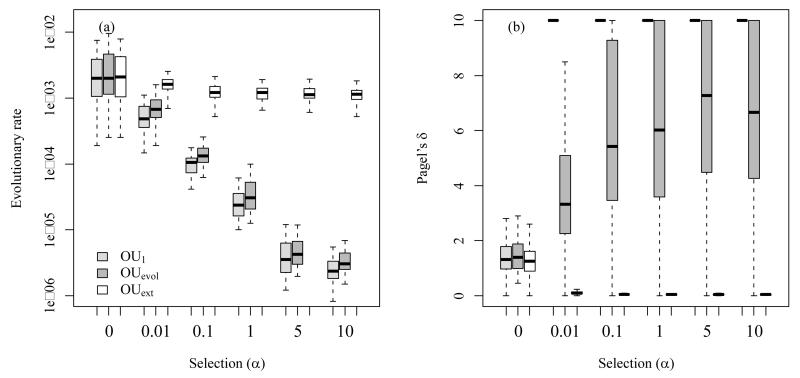Figure 3.
We measured evolutionary rates (panel a), and Pagel’s δ (panel b) in virtual data that we simulated with different niche evolution models (see the legend of Fig. 2 and Appendices S1 and S2 for more detail). Evolutionary rates decreased for parameter changes commonly assumed to increase PNC (high values of selection strength, α, in the OU1 and OUevol model) and remained constant for parameter changes that increase the lability of niches (moderate to high values of selection strength in the OUext model; panel a). The retention parameter Pagel’s δ, in contrast, increased for parameter changes commonly assumed to increase PNC and thus suggested more labile niche evolution towards the tips of the phylogeny. For parameter changes that increase the lability of niches Pagel’s δ decreased, which should indicate PNC according to common expectation (Fig. 3b). In addition, Pagel’s δ had strong convergence problems. Note that outliers were not printed and that the y-axis in plot (a) is logarithmic.

